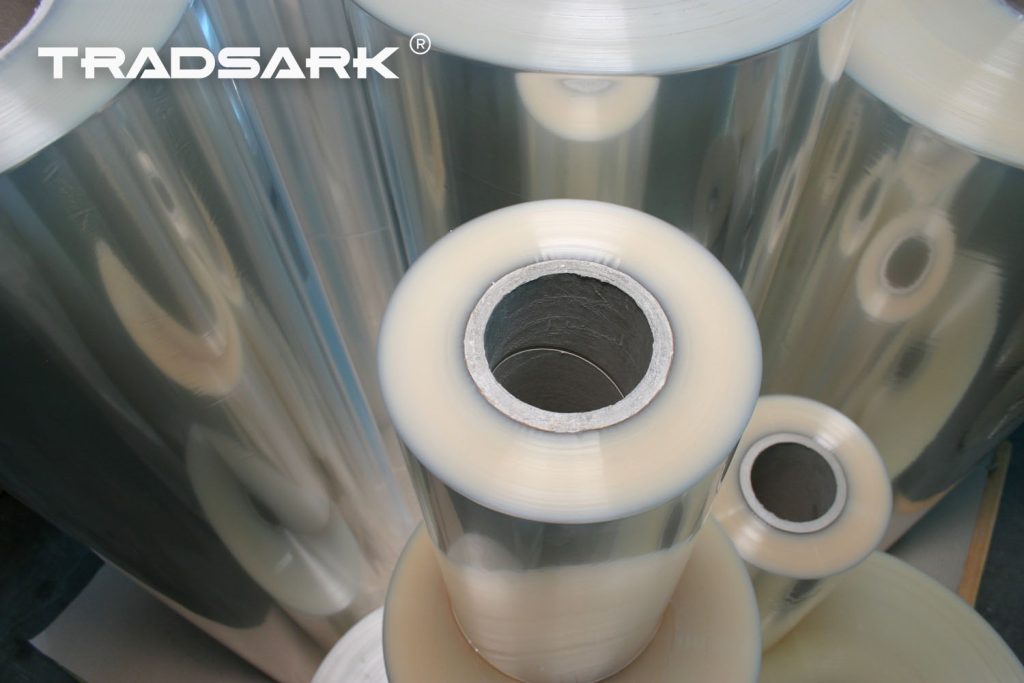Introduction
BOPET (Biaxially Oriented Polyester) and BOPP (Biaxially Oriented Polypropylene) films are two of the most widely used materials in the packaging and industrial sectors. Although they are both biaxially oriented films, they differ significantly in chemical composition, mechanical properties, thermal performance, and applications. For packaging professionals, manufacturers, and distributors, understanding these differences is critical to selecting the right film for specific requirements.
China has become a global hub for BOPET and BOPP film manufacturers, producing a wide range of high-quality films suitable for food, beverages, cosmetics, electronics, and industrial applications. These films are often customized to meet international standards such as ISO, CE, and FDA certifications.
1. Material Composition and Structure
BOPET Film:
- Made from polyethylene terephthalate, BOPET exhibits exceptional tensile strength, chemical stability, and high dimensional integrity.
- Resistant to stretching and shrinking, making it ideal for lamination and high-barrier packaging.
- Transparent and smooth, suitable for high-quality printing, decorative labels, and metallized coatings.
BOPP Film:
- Made from polypropylene, BOPP is lighter, flexible, and moisture-resistant.
- It provides moderate barrier properties and can be combined with metallized or laminated layers for enhanced performance.
- Often used for mass-market packaging where cost-efficiency and high-speed production are priorities.
2. Mechanical and Thermal Properties
- Tensile Strength: BOPET films have higher tensile strength and tear resistance compared to BOPP films, which ensures durability during transportation and storage.
- Heat Resistance: BOPET withstands higher temperatures (up to 150°C), suitable for hot lamination and industrial applications. BOPP films typically handle lower temperatures, making them ideal for cold or ambient packaging environments.
- Dimensional Stability: BOPET maintains shape under stress or temperature fluctuations, while BOPP is more flexible and stretchable, ideal for snack wrappers and heat-sealable bags.
3. Barrier Performance
BOPET Films:
- Excellent barrier against oxygen, moisture, and aroma, making it perfect for sensitive food packaging, coffee, tea, and pharmaceutical products.
- Can be metallized or coated for enhanced barrier properties.
BOPP Films:
- Moderate barrier properties; commonly enhanced through metallization or lamination.
- Widely used for confectionery, snacks, adhesive tapes, and industrial packaging where cost and flexibility are key.
4. Optical and Printability Properties
- BOPET: High clarity, gloss, and smooth surface; ideal for decorative labels, graphic arts, and laminated films.
- BOPP: Clear, white, or metallized surfaces; excellent printability for flexible packaging and promotional materials.
- Both films support multi-color printing, hot stamping, and embossing.
5. Applications
BOPET Applications: Food packaging, beverage labels, industrial lamination, graphic arts, electronics insulation, flexible packaging, and high-barrier packaging.
BOPP Applications: Snack wrappers, candy packaging, heat-sealable bags, adhesive tapes, agricultural mulch films, and industrial packaging.
6. Advantages and Limitations
BOPET Advantages:
- Superior barrier properties and mechanical strength
- High thermal resistance
- Excellent transparency and printability
BOPET Limitations: - Higher cost compared to BOPP
- Requires advanced equipment for processing
BOPP Advantages:
- Flexible and lightweight
- Cost-effective for mass production
- Easy to process in high-speed packaging lines
BOPP Limitations: - Moderate barrier performance
- Lower thermal stability
Conclusion
Selecting between BOPET and BOPP films depends on packaging needs, budget, and production requirements. While BOPET excels in barrier properties and durability, BOPP offers flexibility, high-speed processing, and cost efficiency. By understanding the technical differences, manufacturers and distributors can choose the right film to optimize performance, reduce material waste, and meet consumer expectations.


